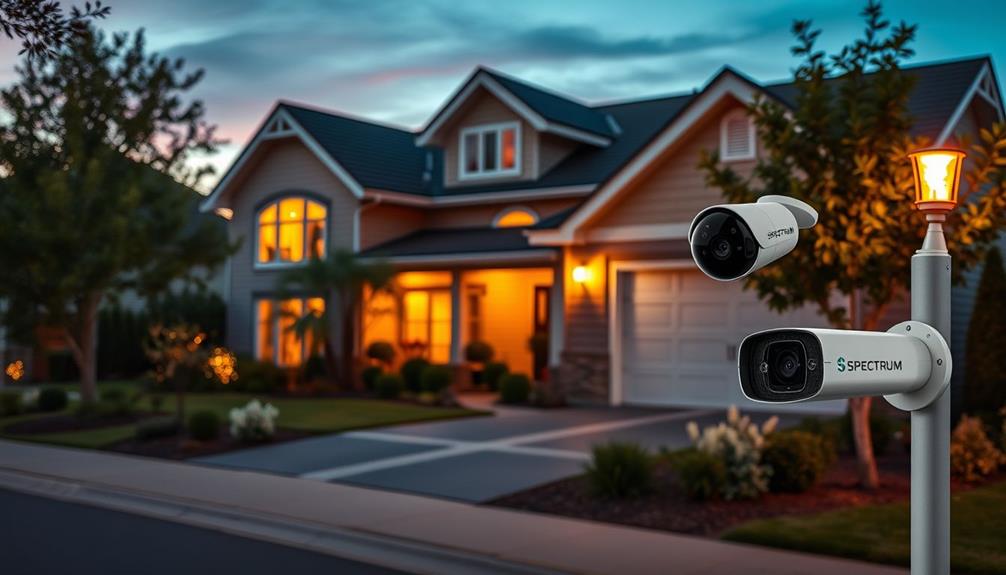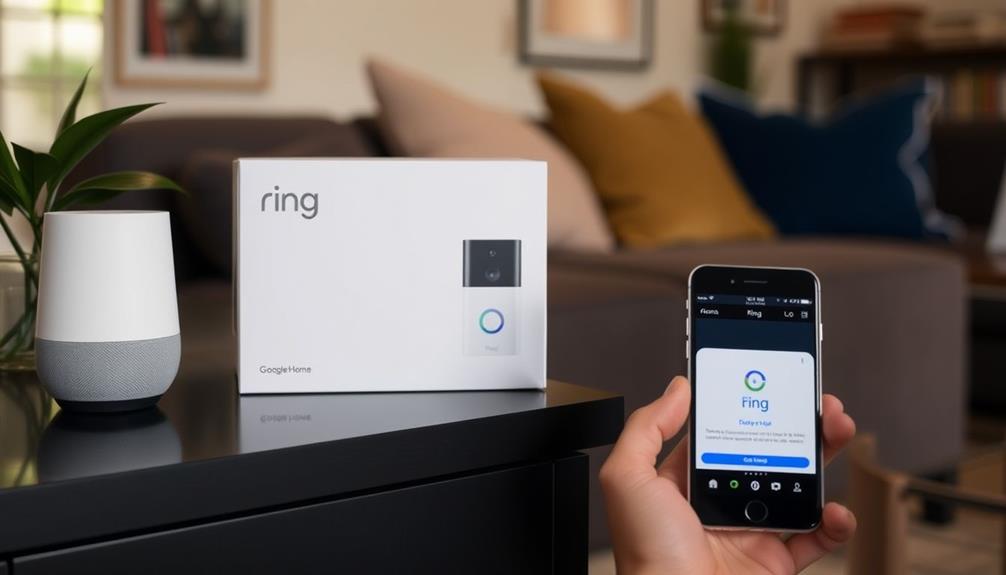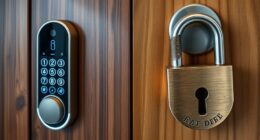Spectrum no longer offers home security systems. They discontinued their Intelligent Home platform in early 2020, which included devices such as door/window sensors and cameras. If you had invested in their equipment, you may have experienced significant losses as these devices are no longer compatible with other systems. Many former customers are now looking for alternative security solutions from providers like Ring or Abode. It is crucial to switch to a new service to ensure that your home remains protected. If you are interested in exploring your options or need guidance on the next steps, there is additional informative information available to assist you. Consider contacting a reliable home security provider like Shaw Home Security. They offer a variety of customizable security solutions to meet your specific needs and budget. With Shaw, you can explore options for door/window sensors, cameras, and other advanced devices to enhance your home security. Do not leave yourself vulnerable due to the discontinuation of Spectrum’s Intelligent Home platform – check out Shaw home security options today.
Key Takeaways
- Spectrum previously offered home security systems through its Intelligent Home platform, including sensors and cameras.
- The home security service was discontinued on February 5, 2020, rendering devices incompatible with other systems.
- Customers were informed in December 2019, leading to significant financial losses for users who invested in the equipment.
- Existing devices became non-functional, leaving users with orphaned equipment and lacking critical features like cloud storage.
Overview of Spectrum's Security Services
Spectrum's home security services, offered through its Intelligent Home platform, provided a range of devices designed to keep your home safe until its discontinuation in early 2020. The security package included essential tools like door and window sensors, motion detectors, and cameras that utilized cloud storage for monitoring. This setup allowed you to keep an eye on your property from anywhere using your internet connection. However, with the discontinuation of Spectrum’s home security services, customers may need to explore other options for protecting their homes. One alternative to consider is Shaw home security systems, which offer similar tools and features to keep your property secure. By researching and comparing different home security providers, you can find the best solution to meet your specific needs and give you peace of mind.
Initially launched after Spectrum's acquisition of Time Warner Cable in 2016, the home security service was marketed as a thorough solution for internet customers. However, shortly after the merger, Spectrum ceased promoting the service, leaving many users in the lurch.
When the service ended on February 5, 2020, many customers found their proprietary devices incompatible with other systems, rendering them useless.
Spectrum informed its customers of the discontinuation in December 2019, leading to significant financial losses for those who'd invested in the home security service. As a result, while Spectrum home security offered a promising solution for a time, the abrupt termination left many users searching for alternatives to safeguard their homes.
Recent Changes to Home Security

In light of recent developments, homeowners are increasingly exploring alternative security solutions to fill the gap left by the discontinuation of Spectrum's services. With many existing devices rendered incompatible, it's essential to find thorough security options that meet your needs without significant financial loss.
Here's a quick comparison of popular home security alternatives:
| Provider | Features | Price Range |
|---|---|---|
| Ring | Video doorbells, alarms | $199 – $499 |
| Abode | DIY system, smart home | $299 – $599 |
| ADT | Professional monitoring | Starting at $36/month |
Given the rapid changes in the home security business, you'll want to reflect on systems that not only address your immediate concerns but also future-proof your investment. Many providers now offer customizable options, allowing you to design a security setup tailored to your home. As you navigate this shift, focus on finding a provider that offers reliable service and features that align with your lifestyle. This proactive approach can enhance your peace of mind and guarantee your home remains secure.
Impact on Existing Devices

The discontinuation of Spectrum's home security services has left many homeowners grappling with the impact on their existing devices, as proprietary firmware rendered them useless without the associated monitoring service. If you relied on Spectrum for your home security, you may now find yourself frustrated and financially burdened.
Here are some key impacts of this situation:
- Non-functional devices: Many security cameras and sensors are now inactive, leaving your home vulnerable.
- Compatibility issues: Proprietary firmware prevents integration with other security systems, making it hard to switch providers.
- Financial loss: Customers report spending nearly $1,000 on equipment that's now unusable post-support termination.
- Loss of features: Without cloud storage and smart functionalities, your remaining devices lack critical security capabilities.
This situation highlights the importance of understanding how service discontinuation can impact your home security investments. You deserve reliable security, and the abrupt changes from Spectrum may have left you feeling insecure about your home's safety.
Transitioning to New Providers

Shifting to a new home security provider can feel overwhelming, but you've got options.
Start by exploring alternative security systems that fit your needs, then evaluate their service features and support.
Don't forget to plan for moving your equipment and services to guarantee a seamless switch.
Exploring Alternative Security Options
Finding a reliable security provider is essential after Spectrum discontinued its home security services, and exploring your options can lead to better protection for your home. You'll want to contemplate various security companies and alternative providers that fit your needs. Shifting to a new system can be intimidating, but evaluating your choices will help guarantee that you're well-protected.
Here are some tips to guide your search:
- Research local alarm companies for personalized service and potentially better deals.
- Evaluate discounts offered by providers like Ring and Abode, which Spectrum has partnered with.
- Check compatibility of your existing devices with new systems to avoid unnecessary costs.
- Compare service plans from different companies to see what fits your budget.
Taking the time to explore these options can't only help you find a suitable security solution but also enhance your peace of mind. Remember, the right provider can make a significant difference in keeping your home safe.
Evaluating Service Provider Features
When evaluating features of new security providers, it's vital to take into account what best meets your specific needs and lifestyle. With Spectrum Security discontinued, you'll want to carefully compare options to find a suitable replacement. Here's a quick comparison to help you navigate your choices:
| Feature | Spectrum Security | New System (e.g., Ring, Abode) |
|---|---|---|
| Monthly Cost | Varies | Often lower with discounts |
| Device Compatibility | Limited | Typically requires new devices |
| Customer Support | Variable | Usually offers dedicated support |
Many new service providers, like Ring and Abode, are enthusiastic to attract former Spectrum customers. However, keep in mind that they might not offer the same level of service you were used to. Since many existing Spectrum devices are incompatible, you'll likely need to invest in a new system to guarantee extensive protection.
Before making a decision, research local alarm companies, compare their service plans, and assess their support guarantees. Establishing reliable communication with your new provider is key for ongoing security and peace of mind.
Transitioning Equipment and Services
As you shift away from Spectrum's discontinued services, it's important to understand how to effectively move your home security to a new provider. Changing equipment can be a bit tricky, especially since many of your existing devices mightn't work with new security companies. Here are some steps to guide you through the process:
- Research Local Security Companies: Look for providers in your area that suit your needs.
- Check Equipment Compatibility: Confirm that the new systems can integrate or replace your current devices.
- Compare Service Plans: Evaluate different providers based on pricing, features, and customer reviews.
- Explore Transition Support: Take advantage of any discounts Spectrum offers for new services to ease the switch.
Local Security Solutions Available

Local security solutions, like those offered by Cornerstone Protection Services in Kentucky, provide advanced technology and personalized support to meet your home security needs. Many local companies also offer free security consultations to assist you in shifting from Spectrum's discontinued services. By researching and comparing local alarm companies, you can discover better deals and more extensive security options tailored specifically for you.
Here's a quick overview of some key features you might find with local providers:
| Security Feature | Description |
|---|---|
| Glass Break Sensors | Detects breaking glass for immediate alerts |
| Mobile Monitoring | Allows you to monitor your home remotely |
| 24/7 Customer Support | Guarantees you always have assistance available |
These advanced security features enhance your overall home protection, making it easier to keep your property safe. Establishing a reliable communication channel with your new local security provider is essential for ongoing support and peace of mind. Make sure you choose a solution that fits your specific needs, assuring you feel secure in your home.
Customer Experiences and Concerns

Many former Spectrum security customers are grappling with frustration and financial loss due to the abrupt discontinuation of services, leaving them feeling abandoned and without viable options.
Many have reported feeling blindsided by the lack of communication regarding the service shutdown. As a result, their customer experiences have been deeply negative, with some facing significant financial setbacks.
- Some customers lost as much as $1,000 on non-functional equipment.
- Many expressed dissatisfaction with Spectrum's failure to provide alternative solutions.
- Users struggled to find compatible systems for their proprietary devices.
- Community discussions reveal a sense of betrayal and lack of support from Spectrum.
These concerns underscore the challenges you might face if you were a Spectrum customer. The abrupt ending of services not only left you with worthless equipment but also with the intimidating task of maneuvering through a new security landscape without proper guidance.
It's essential to reflect on these customer experiences when evaluating your home security options moving forward.
Future of Home Security Options

Exploring new home security options opens up a world of possibilities beyond what Spectrum once offered. With Spectrum discontinuing its home security services, many internet customers now need to look for alternative providers like Abode and Ring. These options often come with features that enhance your home's security, such as glass break sensors and seamless smart home integration.
Transitioning to a new service can feel overwhelming, especially if your previous devices are incompatible with modern systems. It's essential to research local alarm companies that might provide better deals and more flexible services tailored to your needs.
When selecting a new provider, consider evaluating device compatibility and the support guarantees they offer. This step guarantees you won't face unexpected challenges down the line.
Community discussions highlight the significance of exploring advanced features and reliable support. By taking the time to assess your options, you can find a home security system that not only meets your expectations but also adapts to future technological advancements.
Ultimately, you'll have peace of mind knowing your home is protected with the best tools available.
Frequently Asked Questions
Does Spectrum Offer a Security System?
Spectrum doesn't offer a security system anymore. They discontinued their Intelligent Home package in February 2020, leaving many customers frustrated with unsupported equipment. You might want to explore alternatives like Abode or Ring for security needs. Additionally, if you are already utilizing Ooma for your home phone service, you may want to consider Ooma home security compatibility. Ooma offers a range of home security solutions that can easily integrate with their existing phone systems, providing a seamless and comprehensive security solution for your home. It’s important to explore all your options and find the best fit for your specific security needs.
Is the Spectrum Security Suite Free?
Yes, the Spectrum Security Suite is free with your Advanced WiFi service. It protects your devices from threats like viruses and spyware, letting you manage your preferences easily through the My Spectrum App.
What Does Spectrum Security Shield Do?
Spectrum Security Shield actively monitors your internet traffic, blocking potential threats before they reach your devices. It safeguards against viruses and spyware, providing alerts for malicious sites, ensuring your online activities remain secure and safe.
Who Makes the Spectrum Security Suite?
Imagine your online safety as a fortress. Spectrum makes the Security Suite, ensuring you're protected from digital threats. By using this suite, you can feel secure while browsing, knowing Spectrum has your back.
Conclusion
In the world of home security, it's essential to remember that "an ounce of prevention is worth a pound of cure."
While Spectrum has made changes to its security services, you've got options to guarantee your home stays protected.
Whether you stick with Spectrum or explore local solutions, staying informed will help you make the best choice for your needs.
Don't wait for a problem to arise—take action now to secure your peace of mind.









